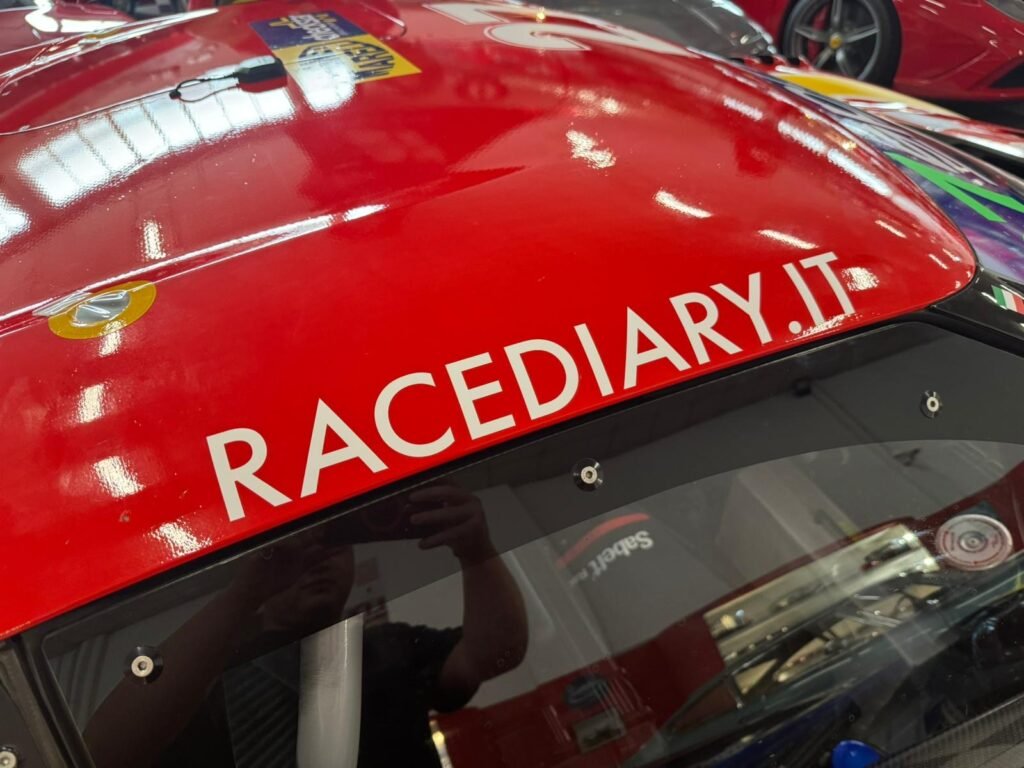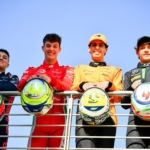On July 19th, during the Vallelunga Racing Weekend (ACI Storico), we had the pleasure to interview Emanuele Pirro. In an engaging conversation, he reflected on key moments of his career, talking about Formula 1, Le Mans, motorsport safety, and future projects.
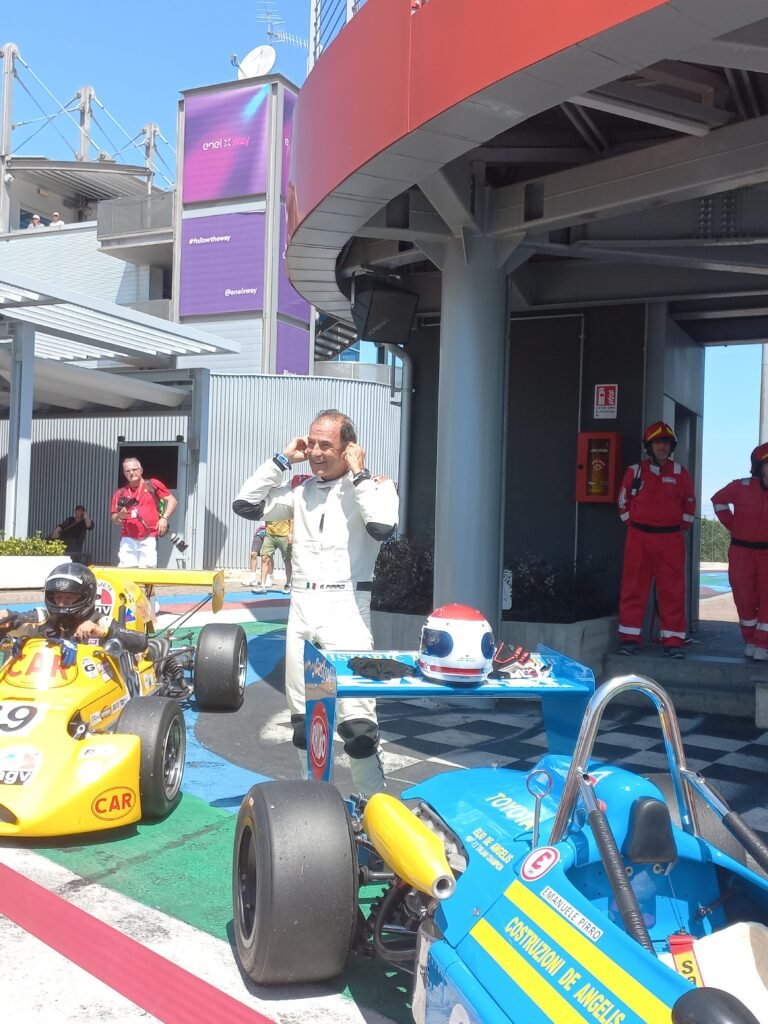
Emanuele Pirro wins race 1 driving his Ralt RT1 Toyota.
Who is Emanuele Pirro?
Born in 1962, Pirro is undoubtedly one of the most successful and well-known Italian drivers. He raced in Formula 1 from 1989 to 1991, competing in 40 grands prix with Benetton and Scuderia Italia, but he is best known for his achievements in the WEC. However, in which category did he feel most fulfilled?
“It’s hard to say, because there are two types of analysis: it depends on the kind of car you drive, and that’s mainly linked to speed. So Formula 1, although is the most brutal, is the most beautiful car I’ve ever driven. But there’s another aspect to consider: the quality and competitiveness of the single-seater. In F1 I’ve driven good cars, but none capable of winning a race, whereas in all other categories, this has happened. The Audis I drove at the 24 Hours of Le Mans were fantastic machines, as was the BMW M3 in Touring, and also the Audi 80 and A4, like also the Formula 2 in 1984.”
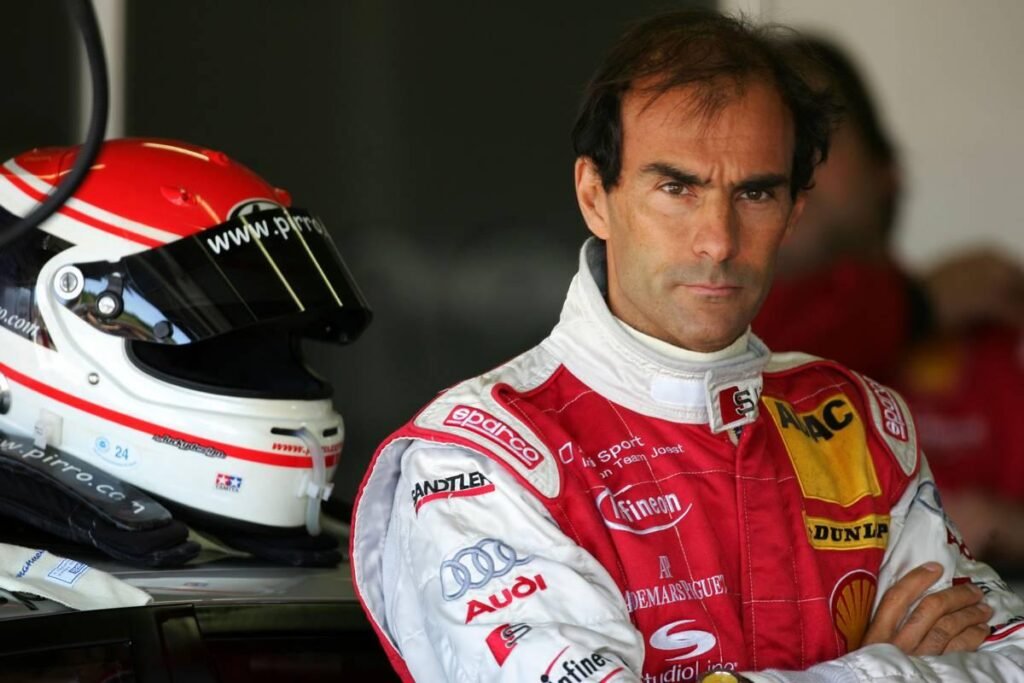
Emanuele Pirro at the 24 hours of Le Mans with Audi: picture of F1Sport.it
The magic of Le Mans
In the WEC, the roman driver triumphed five times at the 24 Hours of Le Mans: in 2000, 2001, 2002, 2006, and 2007. When he was asked about the memories of his first victory and why this race is so special for drivers, Emanuele’s eyes light up, his mind drifting back in time, recalling fond memories.
“The race is special for various reasons: its tradition, with the first edition held over a century ago, but that’s not all. It’s also a place where many manufacturers and drivers have written history, but it’s also cruel, where both drivers and spectators have lost their lives (referring to the 1955 accident involving Pierre Levegh, in which 84 people died, including him, and over 120 were injured). The race is extremely tough due to its duration. The more demanding a race is, the more satisfaction it gives you, and it also represents a very important goal for manufacturers.”
His role at McLaren
In addition to racing as an official Formula 1 driver, Pirro had the honor of being a McLaren test driver during a golden era: the time of Senna and Prost. Two legends who wrote the history of motorsport, and Emanuele had the chance to experience them up close.
“It would be superficial to define these champions “only fast”. To reach that level, you need qualities that go beyond speed, such as determination, attention to detail, the ability to interact with the team, and to make the most of every situation that arises. It’s this combination of traits that helped me to become a better driver. From a professional standpoint, it was a crucial moment in my career.”

Ayrton Senna, Emanuele Pirro and Alain Prost: picture of FormulaPassion
The importance of safety and technological development
We couldn’t avoid addressing the topics of technological development and safety, the latter being a key theme for Pirro. In fact, since 2010, he has served as an FIA commissioner in Formula 1, working tirelessly to improve safety standards in motorsport. Racing can be ruthless, as we know, and that’s precisely why Pirro, along with many others, has worked relentlessly to reduce the level of risk.
“These technologies certainly existed in the past, but were understood in a more superficial way. In motorsport, technological improvement is evident, but the same applies to all other sports, from the preparation to race day. For example, compared to 30 years ago, football seems like a completely different sport. Not because today’s players are stronger, but because the tools for improvement have evolved. In motorsport, technology has had a huge impact, and it’s a sensitive topic. It’s a fairly common opinion that things were better before, and that much has been lost in racing today. Personally, I don’t subscribe to that idea. If you look at articles and interviews from the past, people were saying the same thing: that it was better back then. This happens because we tend to idealize the past and fail to understand the present.
In my opinion, every era has its own characteristics, and spectators need to learn to understand and appreciate them. It’s true that today’s knowledge is far more advanced than before, and this has made everything more evolved—so the differences between being at the top or not are minimal. But there’s another aspect that shouldn’t be underestimated: how sport is now told. The way it’s communicated has changed drastically, in every sense. Still, I believe that if we watched a videotape of a grand prix from the past, I challenge anyone to say those races were better than today’s. We need to understand what we have now: drivers have changed, the tools have changed, and so have we. It saddens me when I see so much negativity from people who judge a grand prix only by the number of overtakes, which I think is a shallow criterion. That said, in the past there were many more imperfections, and as a result, more unpredictability. Drivers made more mistakes because the tracks were more demanding and less refined, and the cars broke down more often.”
After these topics, we moved on to even more familiar ground: home. Vallelunga can indeed be considered his home race, given his place of birth. It’s a track that’s not only highly technical, but also a landmark in motorsport, something Pirro himself is keen to emphasize. Moreover, during the weekend, he managed to win the first race, while in race two he couln’t go over fourth place.
“In Italy, we’re extremely lucky, because we’re full of circuits that are true gems on an international level, and Vallelunga is definitely one of them. I’ve always liked it as a track because it’s technical and demanding. Even though it doesn’t have long straights, it offers a variety of corners that make it unique. For the car I’m driving now (Ralt RT1 Toyota), it’s perfect, because it’s an agile machine that lets you have fun in the corners.”
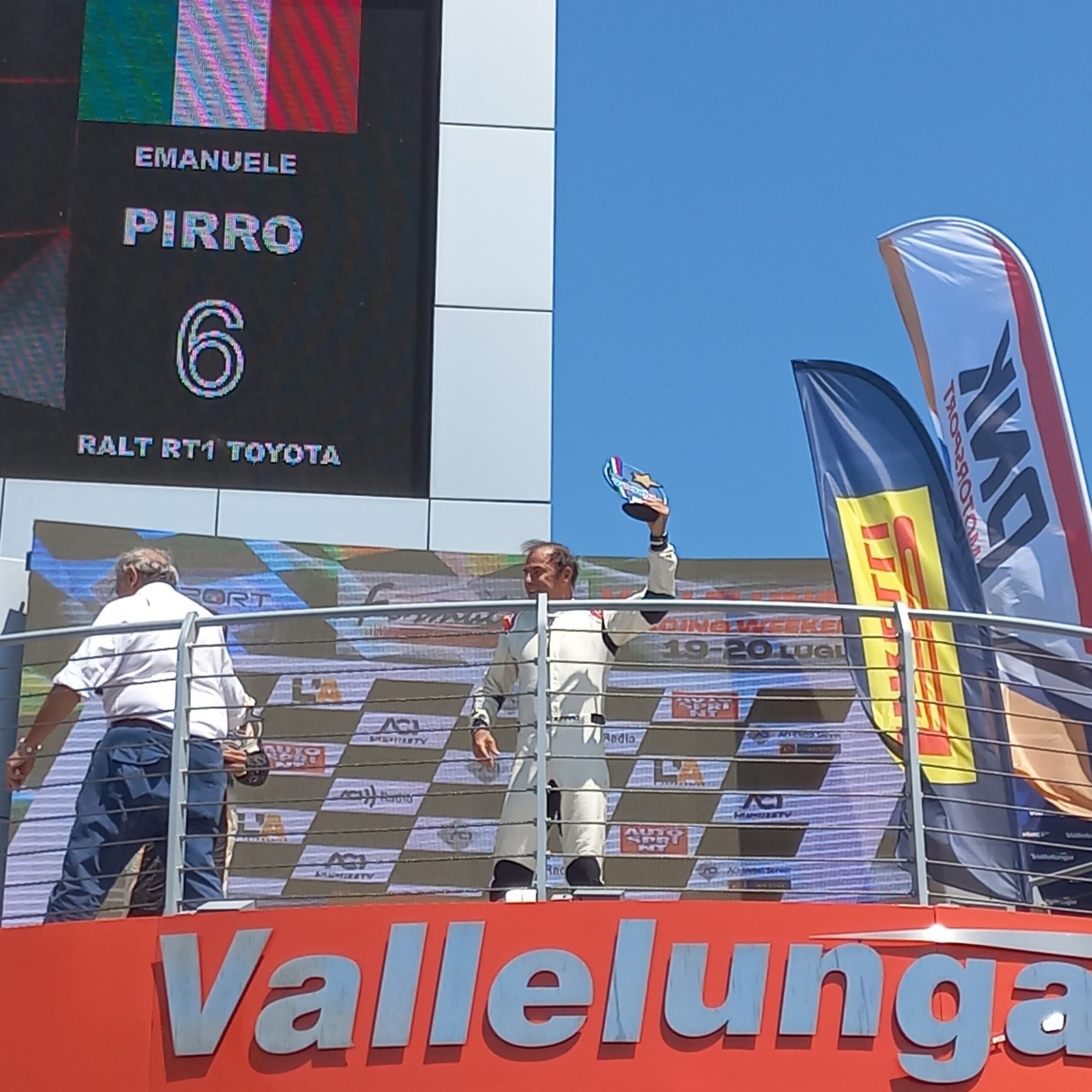
Pirro on the podium of Vallelunga
Let’s end with a question that looks to the past, but also leaves room for the future: “Is there something he would have liked to do in motorsport but didn’t manage to?”
“Yes, but life isn’t over—I’d love to manage a top-level team.”
Despite his success, Emanuele Pirro has revealed himself to be a humble man, always smiling, who looks at motorsport through the eyes of someone who truly loves it. Despite everything he has achieved in his career, he doesn’t seem willing to settle—and we can only agree with that.
Read also: Leonardo Fornaroli, now you too are a Formula 2 winner!
